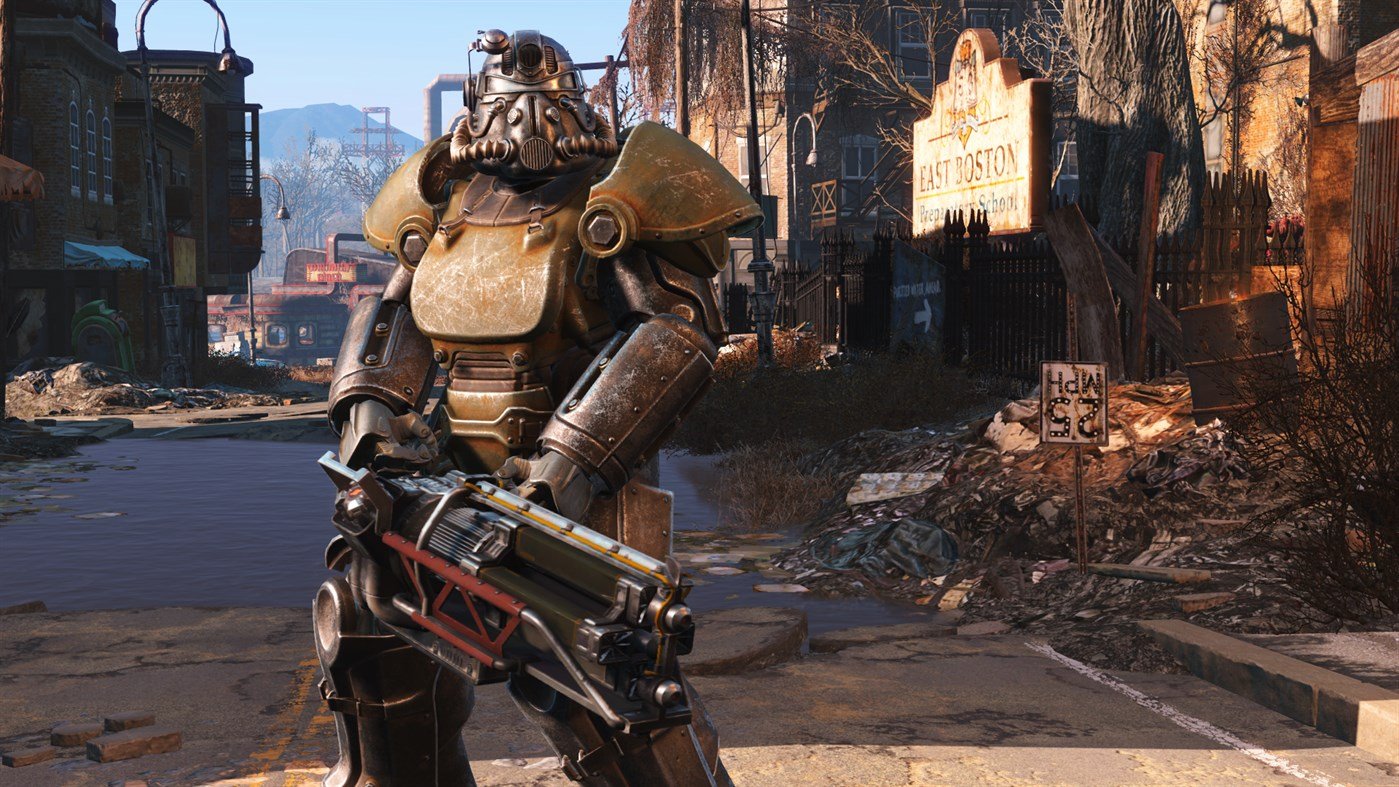Xbox Live Developer Interview: Microsoft Game Studios, makers of Beards & Beaks

WPCentral’s Xbox Live Developer Interview series continues as we converse with Adam Isgreen of Microsoft Game Studios. Adam’s team developed Beards & Beaks, a Windows Phone-exclusive real-time strategy game. Check out our full review here. In the following interview, we’ll delve into a few of the game’s mysteries and reveal exclusive, never-before-seen concept art.
Step over the gnomes and head past the break for the full interview.
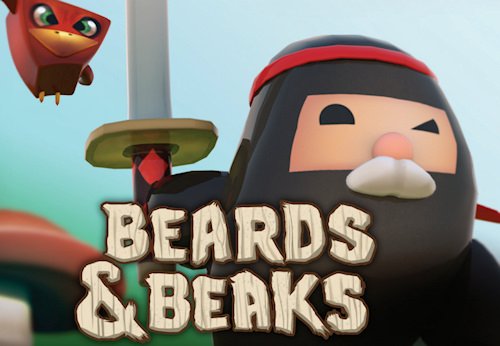
Howdy! Please tell us about yourself and what you do at Microsoft Game Studios.
I’m Creative Director for the Connected Experiences group. I oversee the creative aspects of Mobile, XBLA, and Windows PC digital games.
Let’s touch on the rest of the team too. Where are you guys located, and can you buy good ice cream there?
We’re located on the Redmond studios campus here in sunny Seattle. There’s several good ice cream (and froyo) choices nearby, including both on-campus ones and off-site locations. In my opinion, our best option is Theno’s home-made ice cream, which is only about 10 minutes away!
What kind of experience did the team have with Windows Phone before starting on the Beards & Beaks project? Have you worked on games for other platforms too?
All the latest news, reviews, and guides for Windows and Xbox diehards.
Before B&B, most of us were either working on other mobile device games, or console and PC products across all of Microsoft’s [platforms]. Here’s a few of the things the team has worked on: Halo, XNA, Highborn, 1st party XBLA titles, Command & Conquer, SpaceChem, Fable II… There’s a lot more!
And that brings us to Beards & Beaks. This game pits a village of gnomes against a murder of crows in a war for treasure. How did the premise come about?
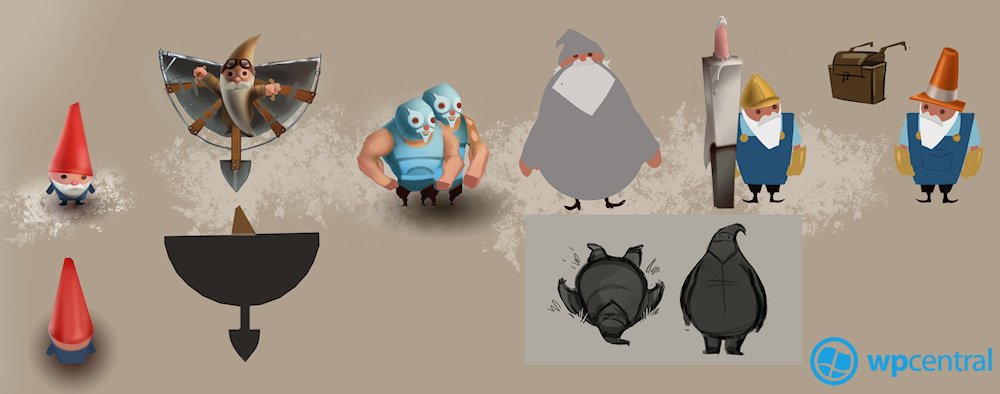
Very organically. The initial inspiration was a war game centered on lawn gnomes and the dilemmas that battling in a back yard would lead to. We moved away from that as we developed the game, as we were straddling a line between being in the “real” world and their world too much, so we embraced the gnome’s world and ran with it.
One early conceit was that the treasures were from our worlds – originally they were bottle caps, jacks, coins, and other random shiny objects – things that we (humans) discarded and fell through cracks in our world and into theirs. The gnomes thought these were gifts, so they treasured them. The notion that all the objects were shiny led to a discussion about what [other creatures] would want to take all these shiny objects. That led to crows, naturally, who have a knack for taking shiny objects.
Although we eventually standardized the shiny objects into gems, Crows would still like ‘em. When the crows arrived, they coveted what the gnomes had, and in their attempts to take them, riled up the gnomes and forced them into action.
Sounds like crows, alright. So how long did it take to develop the game from start to finish?
We changed the direction of the game after a bit of prototyping from a hardcore strategic war game to a more approachable action/puzzle game, so once we re-directed, development took about 6 months.
What are you most proud of in the finished product?

Not only did we deliver a great game experience, but we also helped to push new services for the platform (add-on content) that every other Windows Phone game will benefit from.
On top of its cute and endearing art style, Beards and Beaks features a jaunty selection of music composed by the late Raymond Scott. How did his tunes end up in the game?
We had discussions around the kind of music that we wanted in the game, and we felt that the old Loony Tunes cartoons and Carl Stalling’s work were full of fun inspirations that would fit with our world (and our art style) really well. Raymond’s work was the foundation of almost everything Carl did, so we felt it was a nice way to pay homage to the man who really was the creative influence behind those wonderful musical scores that many of us grew up listening to while watching cartoons. Plus, his work is just fantastic and catchy – it’s hard to get out of your head!
Let’s get more technical. Instead of tutorial text, many of Beards & Beaks’ levels start out with chalkboard drawings that are intended to teach a new gameplay element or strategy. Unfortunately, the meaning of these drawings is not always clear. Is there any chance of adding supplemental text down the line?
We went with this style to try and get around translation issues we would have with putting text on the screen. Unfortunately, we don’t have plans at this point to update the game with supplemental tutorials.
Another thing we’re unclear on is the rating system. Upon completing a level, players receive a rating of between one and three gnomes. How is the number of gnomes tied to performance?
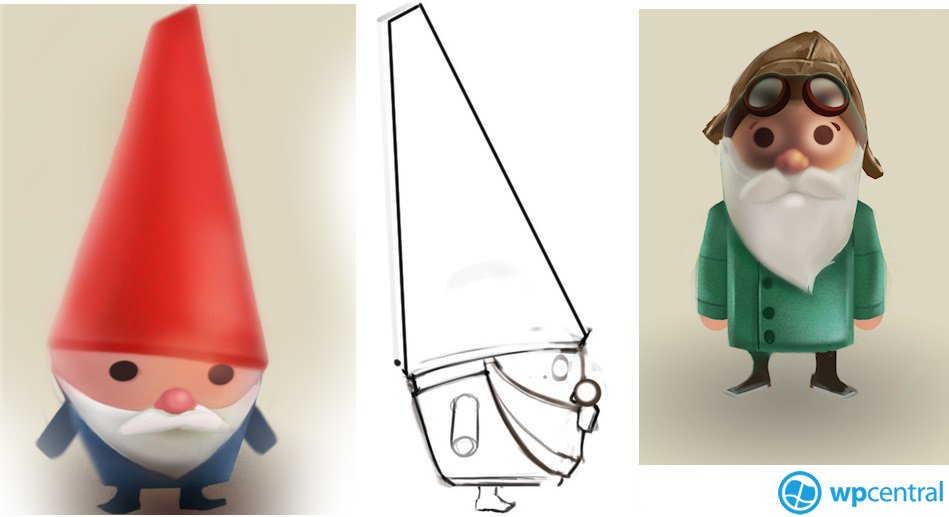
This is a rating of how well the player did in the battle. Each type of scenario has its own rating logic, so collect maps (get more gems than the crows) are rated differently than destroy (beat up X number of crows) maps vs. defend (protect your fort for X time) maps. The number of gnomes you can earn is set by reaching certain score thresholds within each map. Here’s a quick rundown of how scoring works:
- Collect maps give a score for the value of the gems returned to the base plus a time bonus for how quickly players reach their gem objective.
- Destroy maps give points for every crow or base destroyed plus a bonus for the total number of gnomes you start with vs. how many (in number) you lost over the course of the map. Keep all your gnomes alive for the highest possible bonus.
- Defend maps give you score for each objective that survives when time runs out plus a bonus for the health of your objectives. The higher their health at the end, the larger the bonus.
Let’s move on to the mushroom system. What role do mushrooms play and how do players acquire more of them?

Along the bottom of the screen is the player’s mushroom bar and their mushroom powers. Each power consumes 1 to 3 mushrooms to use, depending on the power and its effect. A player starts with 10 mushrooms and can get more through two major avenues.
First, mushrooms regrow in the bar a rate of 10 mushrooms per 24 hours, so if you used up all your mushrooms, they’ll regrow to full after a real day has elapsed. Second, players can purchase additional mushrooms via bundles (10 mushrooms per bundle) through a micro-transaction system, simply by touching on the mushroom bar itself. The first extra bundle is free, and the rest you can purchase inexpensively with MS points. No level requires the powers in order to complete them, but they’re very satisfying to use!
In addition to mushrooms, players can also buy new levels with Microsoft Points. What are the advantages of offering downloadable content on release date rather than down the line?

It was important to us that we show players how easy it is to get new content on the Windows Phone 7, so we wanted to have both free and paid content available from the day the game launched. The immediate advantage is that you have more [levels to] play if you’d like, without waiting on us to build it and put it out – the option is now in the player’s hand… If you want more, you can get it right now, and what’s not to love about immediate gratification?
We [also released the Cave DLC levels] at a later date, so in the long run, we [did have] both kinds of content.
Paid downloadable content for Xbox 360 games often includes new Xbox Live Achievements on top of the ones that come with the main game. Will Beards & Beaks and/or other Windows Phone games be allowed to add more Achievements and GamerScore with DLC as well?
It’s an ongoing discussion, but we certainly like the idea of being able to reward players with new Achievements as new content rolls out!
We hear Beards & Beaks if the first Windows Phone game developed entirely in-house at MGS. Is there any particular reason that Xbox Live titles from outside developers like Chaotic Moon and Krome made it out sooner?

Although the internal team operates like a small dev studio in the middle of MGS, we have the additional work of setting the standards for all the new technologies we develop, which will be used across the studios and by 3rd party developers. The additional work means more time before we can release.
Fortunately, now that many of these practices are in place, the speed at which we and others can release games that take advantage of these features accelerates. Of course, we’re chartered to always cover new ground, so for us, we’re always going to be a bit slower. Making developer’s lives easier in the process is a nice trade off though.
Has your team started development on a new project since completing Beards & Beaks? If so, what platform will you be working with?
Yes! Our internal team is hard at work on a very ambitious and mind-blowing project for Windows Phone 7 and beyond….
Finally, how do you think Windows Phone will affect the smartphone gaming market in the future?
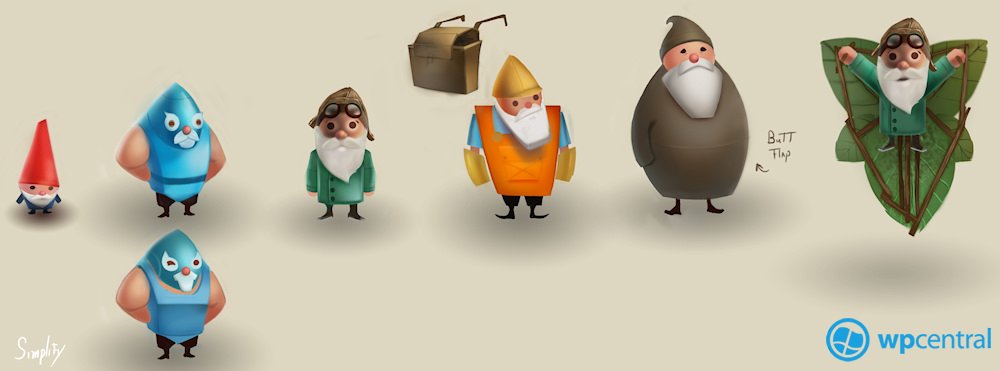
Having LIVE integration on a mobile gaming device really can’t be ignored. The benefit of being able to tie my gaming to my friends and their activities beyond just on the couch in front of the console is a very compelling scenario. We intend to further develop that connection to allow all kinds of mind-blowing integration between screens as we move into the future.
Beards & Beaks costs $2.99 and there is a free trial. Pick it up here (Zune link) on the Marketplace.

Paul Acevedo was formerly a Games Editor at Windows Central. A lifelong gamer, he has written about videogames for over 15 years and reviewed over 350 games for our site. Follow him on Twitter @PaulRAcevedo. Don’t hate. Appreciate!
